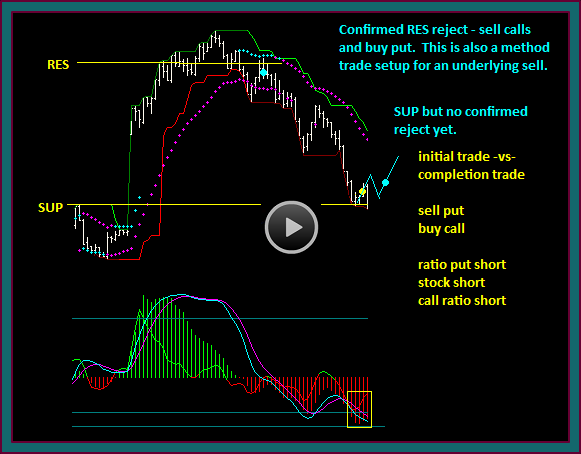Support Resistance Basics Short Selling
Post on: 5 Июль, 2015 No Comment

This lesson aims to make a simple point about the usefulness of S/R levels to trading profitably:
- It makes sense to go long (bet that the pair’s price will rise) or close shorts (bets that the pair’s price will fall) close to support, a level that the price should not fall much below.
- It makes sense to go short (bet that the pair’s price will fall) or close longs (bets that the pair’s price will rise) close to resistance, a level that the price should not rise much above.
As with stock trading, the question of short selling/long position or going short/going long is one that every Forex trader must face before placing a trade. A Forex trader will buy a position on the basis that the market is going to force the price of a currency pair upward. This is known as a long position.
A short position in a Forex trade is the other side of the coin. When the price moves down, it is possible to sell the base currency (i.e. the GBP in GBP/USD). When the dollar gains strength sellers start to get the upper hand of the buyers and the price will move down. The trader can then close his position and a profit has been made.
Support is where a trader can open a position because it’s probably the lowest position that supports the price from moving against the trader. Resistance is the zone where the trader wants to close a position because it’s the likely best price he can expect to get when he closes your position.
In a previous lesson, we mentioned that when trading in Forex we try to buy at the support level — i.e. the bargain price, and sell at resistance — i.e. the full or list price.
The whole point of basic technical analysis (TA) is to find these likely low and high prices for a given period. They become our low-risk entry points and high-yield exit points.
Whether we enter at the anticipated low price or the high price for a given currency pair depends on whether or not we make an attempt at short selling/long position trading.
For those not familiar with the terms short selling/long position or going long/going short, let’s define these terms:
Going Long
You take a “long position” or you “go long” when you attempt to buy low and sell high, just as with most business transactions outside of financial markets like forex. For example, retailers buy goods at a cheaper wholesale price, and then sell them at a higher retail price. This is going long.
Going Short
You take a “short position” or “go short” when you sell something at a given price, with the intention of delivering it at a later date when you’re able to buy it at a lower price and profit on the difference. If at that later date you need to pay a higher price, then you lose money on the trade. This would be considered going short.
Definitions of s/r are reversed for long or short trades. When you are buying (or going long) a currency pair, the definition of support and resistance is the same as in any other kind of business and thus easy to understand:
SUPPORT is the likely low price where we want to buy the currency pair to open our position.
RESISTANCE is the likely high price where we want to sell the pair, close our position. and take profits.
When you are selling (or going short) the pair, the definition is reversed:
SUPPORT is the likely high price where we want to sell the currency pair to open our position.
RESISTANCE is the likely low price where we want to buy back the pair and close our position and take profits.
This should not be confusing as long as you understand that S/R is conceptually the same for long or short trades. In other words, we define:
Support as where you want to open a position because it’s the likely bargain price or “floor” that supports price from moving against you and protects you from potential losses. The closer your entry is to support, the smaller your losses.
Resistance is the zone where you want to close a position because it’s the likely best price you can expect to get when you close your position; it’s the area like a ceiling that resists further gains.
Support is where you want to open or enter a position. Resistance is where you want to close or exit a position for the most profit. For long positions resistance is always higher than support. For short positions support is always higher than resistance.
In other words, you always enter near support and sell near resistance.
With these definitions of S/R clarified, we can now explain why identifying strong S/R is the key to making high-yield, low risk trades.
cdn.fxacademy.com/media/81504/3.1-SR-Basics-Long-Short-Trades.mp4.mp4














